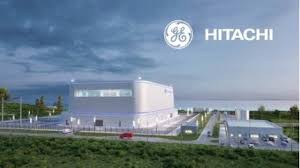
The Environment Agency, Office for Nuclear Regulation (ONR) and Natural Resources Wales (NRW) said the focus of the regulators during Step 1, which started in January 2024, has been on ensuring the necessary arrangements, processes and submissions are in place to begin Step 2 of GDA. They added: “An agreed scope and schedule for the technical assessment of the GE-Hitachi BWRX-300 reactor design are in place. Based on the evidence provided, the regulators are satisfied that GE-Hitachi has demonstrated its readiness to proceed to Step 2.”
The GDA process enables regulators to begin assessing the safety, security, safeguarding and environmental aspects of new nuclear power station designs at an early stage of the regulatory process and to provide confidence that these new designs can be constructed, operated, and decommissioned in England and Wales.
During Step 2, regulatory activity will be targeted on assessing the fundamental adequacy of the BWRX-300 design for deployment in England and Wales. “This will consider the suitability of the methodologies, approaches, codes, standards and philosophies identified by GE-Hitachi in the generic safety, security, safeguards and environment cases for securing future regulatory permissions and permits.”
Saffron Price-Finnerty, the Environment Agency’s New Reactors Programme Manager, said the Agency was now ready to move from Step 1, Initiation, to Step 2, Fundamental Assessment. “During Step 2 our skilled and experienced team will be assessing the underpinning fundamentals of the BWRX-300, including identifying any specific environmental protection issues or concerns that we find…. We’ll work with other regulators to see what can be achieved while ensuring protection of people and the environment, and we encourage people to engage with the next steps through the public comments process.”
Rob Exley, ONR’s Head of Regulation for the GE-Hitachi BWRX-300 design, said Step 2 of the GDA “will mark the beginning of ONR’s technical assessment of the BWRX-300 reactor, where we’ll examine GE-Hitachi’s submissions setting out why it believes its generic design can be safely and securely deployed in Great Britain” He added: “We will also seek to build upon our collaborative partnerships with both the US Nuclear Regulatory Commission and the Canadian Nuclear Safety Commission. We are fully supportive of GE-Hitachi’s ambition to maintain a standard reactor design with minimal design changes from country to country. As all our organisations are reviewing essentially the same design in parallel, ONR is committed to exploring all opportunities for more efficient regulation, the sharing of insights and information, considering common submissions and analysis, and enabling GE-Hitachi to maintain a common design as much as possible.”
GE-Hitachi has launched a new GDA website where it publishes detailed information about its design and a public comments process. The public comments process enables anyone to submit comments and questions about the reactor design to the company for its response. Regulators see the questions and the responses, and, where relevant, use these to help inform their assessments throughout the rest of the GDA process.
GE-Hitachi Nuclear Energy is receiving some of its funding for its own costs and those of the regulators for this GDA from the UK government’s Future Nuclear Enabling Fund programme. Separately, they have been selected by Great British Nuclear to advance to the next phase of the small modular reactor competition to identify technologies to be included in the UK nuclear programme.
At the end of Step 2, the regulators will publish Step 2 GDA Statements indicating their level of confidence in whether the design can potentially be built, operated, and decommissioned in England and Wales in a way that is safe, secure and protects the environment. No Design Acceptance Confirmation (DAC) or Statement of Design Acceptability (SoDA) will be issued at the end of the currently agreed programme of work.
If the BWRX-300 is proposed for construction in England or Wales, then a further period of detailed design assessment would be needed. This would be required before safety significant construction could commence and environmental permitting could be completed. This could be carried out on a generic basis with GE-Hitachi if it chooses to return to GDA to complete Step 3, or with the licensee or operator of a site-specific development.
Generic Design Assessments have previously been completed for the EDF/Areva UK EPR, the Westinghouse AP1000, the Hitachi-GE UK ABWR and the CGN/EDF/GNI UK HPR1000 designs. A GDA assessments are also ongoing for Rolls-Royce SMR’s design and Holtec International’s SMR-300. In August, Westinghouse’s AP300 was accepted for a GDA review. Start-up Newcleo recently applied for approval for a GDA assessment of its LFR-AS-200 small modular lead-cooled fast reactor.